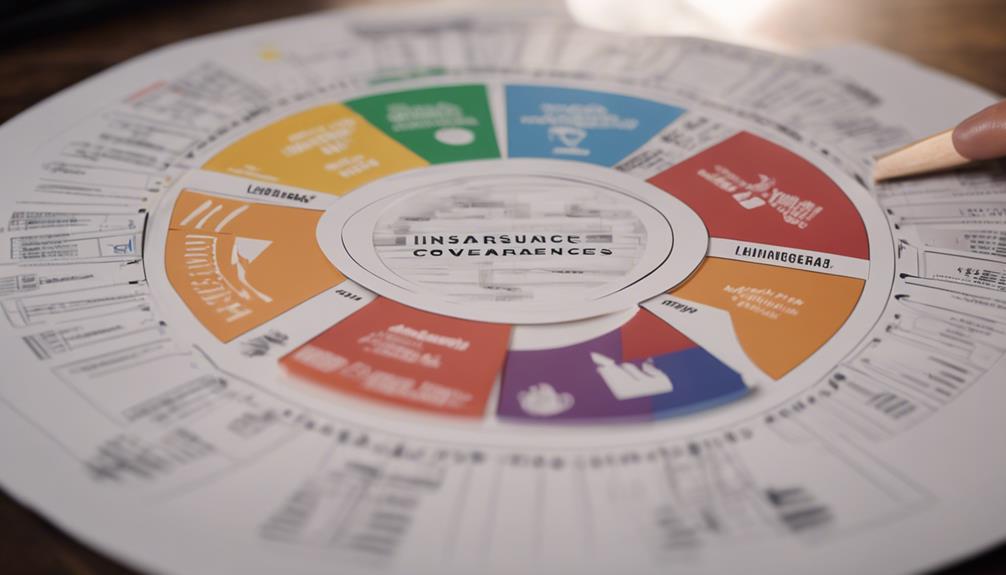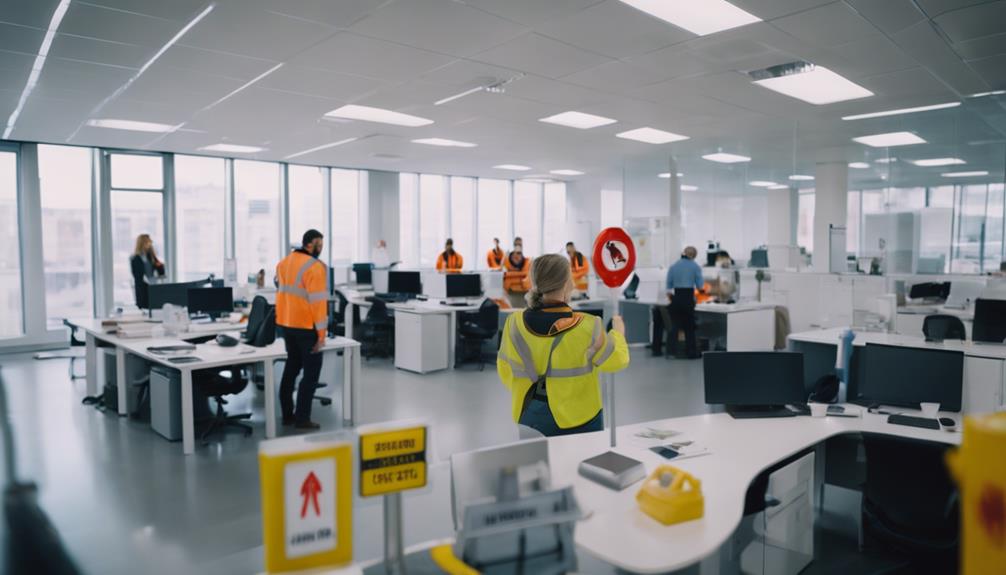You can slash your business insurance costs by adopting effective strategies. First, invest in employee training to reduce workplace accidents and lower premiums. Next, consider bundling coverages; a business owner policy (BOP) can often save you money. Prioritize safety by implementing robust protocols that boost insurer confidence and keep costs down. Don't forget to eliminate unnecessary coverage by carefully reviewing your policies and cutting any that aren't essential. Finally, regularly review equipment and auto policies to guarantee they match your current needs. Keep these tips in mind, and you'll discover more ways to optimize your insurance expenses.
Key Takeaways
- Invest in employee training to reduce workplace accidents and lower insurance premiums, creating a safer work environment.
- Combine insurance coverages through bundling or business owner policies to lower overall costs and streamline management.
- Prioritize safety by implementing strong safety protocols, which can lead to lower insurance premiums and enhanced insurer confidence.
- Eliminate unnecessary coverage by regularly reviewing policies to ensure only essential coverages are maintained, avoiding inflated costs.
Invest in Employee Training
Investing in employee training not only equips your team with essential skills but also markedly reduces workplace accidents and lowers your insurance premiums.
When you prioritize training, you empower your employees to handle tasks safely and efficiently. This proactive approach minimizes the risk of injuries and accidents, which can lead to higher insurance costs.
Furthermore, well-trained employees are less likely to engage in distracted driving, a major cause of road incidents. By implementing thoughtful driving policies alongside robust training programs, you create a safer work environment.
Ultimately, this commitment to safety enhances your business's reputation and builds trust with insurers, which can translate into significant savings on your insurance premiums over time.
Combine Coverages

Combining different insurance coverages can greatly reduce costs while guaranteeing your business is adequately protected against various risks. Instead of purchasing individual policies for each coverage, consider bundling them into a single package.
Business owner policies (BOP) are particularly advantageous for small to medium enterprises, offering essential coverages at a lower rate. Larger businesses might find customized commercial package policies beneficial, allowing them to tailor coverage to specific needs.
By streamlining your insurance, you not only simplify management but also often qualify for discounts. As risks vary, extensive coverage guarantees you're safeguarded against diverse liabilities, ultimately enhancing your financial stability without breaking the bank.
Prioritize Safety

A solid safety plan is essential for every business operation to prevent accidents and injuries. Make sure your employees have access to this plan and understand its importance. When everyone knows the protocols, you create a safer work environment.
This not only reduces the likelihood of incidents but also strengthens your insurer's confidence in your business practices. Effective safety measures demonstrate your commitment to risk management, which can lead to lower insurance premiums.
Invest in training and resources that emphasize safety; well-trained employees are less likely to make costly mistakes. By prioritizing safety, you not only protect your workforce but also enhance your bottom line by potentially slashing insurance costs.
Eliminate Unnecessary Coverage

Evaluating your coverage can help you identify and eliminate unnecessary policies that inflate your insurance costs.
Start by reviewing your existing insurance and determining which coverages are essential for your specific business needs. For instance, general liability insurance is often a minimum requirement, but additional coverages may not be necessary if your business model doesn't warrant them.
If you don't have a physical location, reconsider property insurance. Additionally, assess any elective coverages you might've added over time; they may no longer serve a purpose.
Review Equipment and Auto Policies

Regularly reviewing your equipment and auto policies confirms that your coverage accurately reflects your business needs and helps avoid unnecessary costs.
Here are key steps to ascertain you're on track:
- List All Assets: Make certain every covered vehicle and piece of equipment is accurately documented.
- Assess Coverage Needs: Evaluate if your current policies align with your current operations and equipment.
- Remove Redundant Items: Eliminate coverage for any vehicles or equipment that you no longer own.
- Add New Acquisitions: Update your policies to include any new vehicles or equipment to avoid gaps in coverage.
Frequently Asked Questions
How Can I Find the Best Insurance Provider for My Business?
To find the best insurance provider for your business, research multiple options, compare coverage and costs, read customer reviews, and consult with industry peers. Don't rush—ensure you choose a provider that meets your specific needs.
What Factors Influence Business Insurance Premiums the Most?
Did you know that 80% of businesses with extensive safety plans see lower insurance premiums? Factors influencing your business insurance premiums the most include employee training, safety measures, and the types of coverage you choose.
Are There Any Tax Deductions for Business Insurance Costs?
Yes, you can deduct business insurance costs on your taxes. This includes premiums for general liability, property, and workers' compensation insurance. Keep accurate records, and consult with a tax professional to maximize your deductions.
How Often Should I Review My Business Insurance Policies?
You might think reviewing your business insurance policies isn't necessary often, but it's essential to do so at least annually. This guarantees your coverage remains adequate and reflects any changes in your business operations.
What Should I Do if My Insurance Claim Is Denied?
If your insurance claim's denied, review the denial letter carefully. Contact your insurer for clarification, gather necessary documentation, and consider appealing the decision or seeking legal advice to strengthen your case. Don't give up!
Conclusion
By implementing these smart strategies, you can truly transform your approach to business insurance costs.
Did you know that businesses that prioritize employee training and safety see a significant drop in premiums? It's not just a theory; it's a proven fact.
So, take action now—invest in your team's skills, bundle your coverages, and regularly review your policies.
You'll not only protect your business but also keep more money in your pocket for what really matters.









